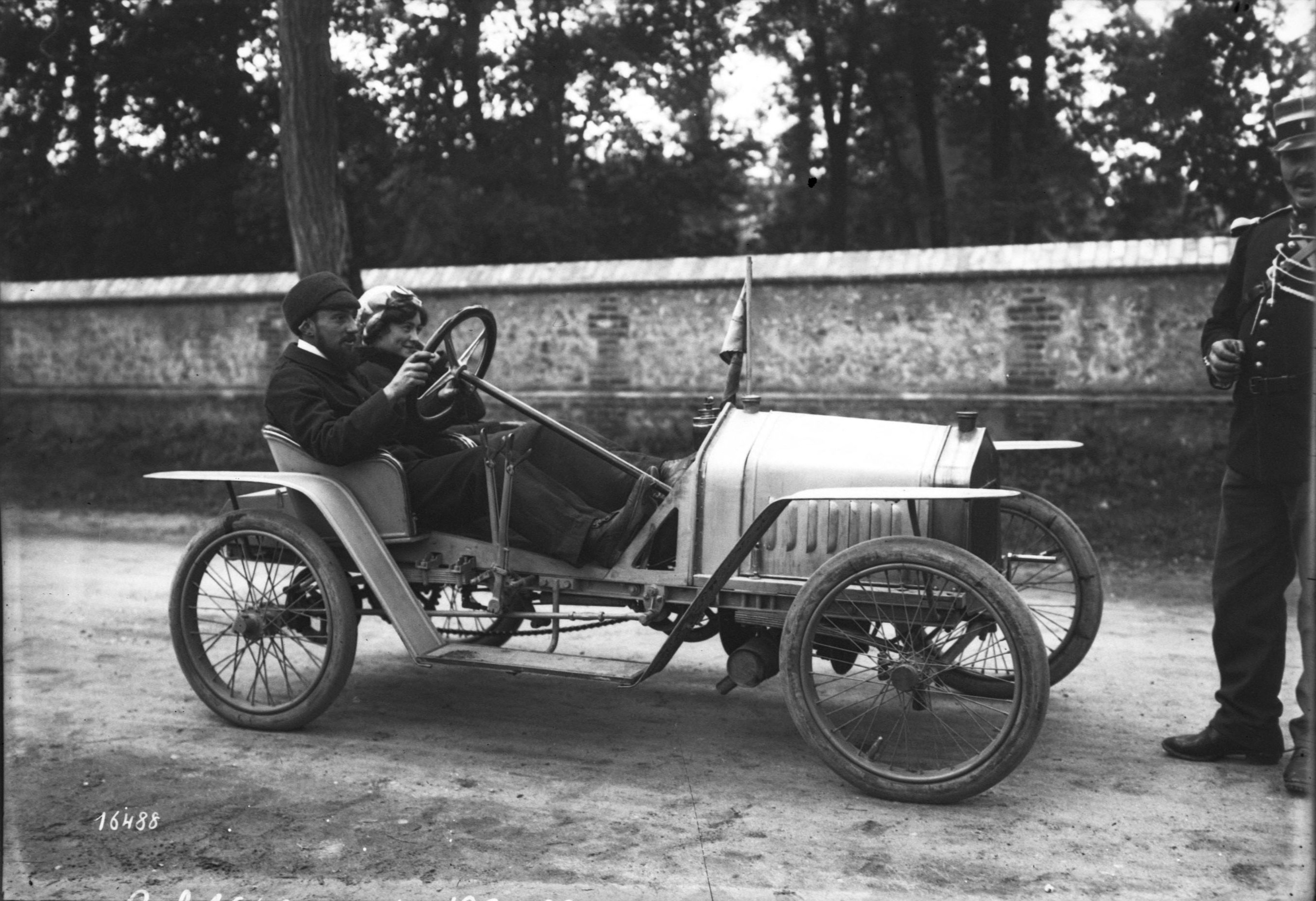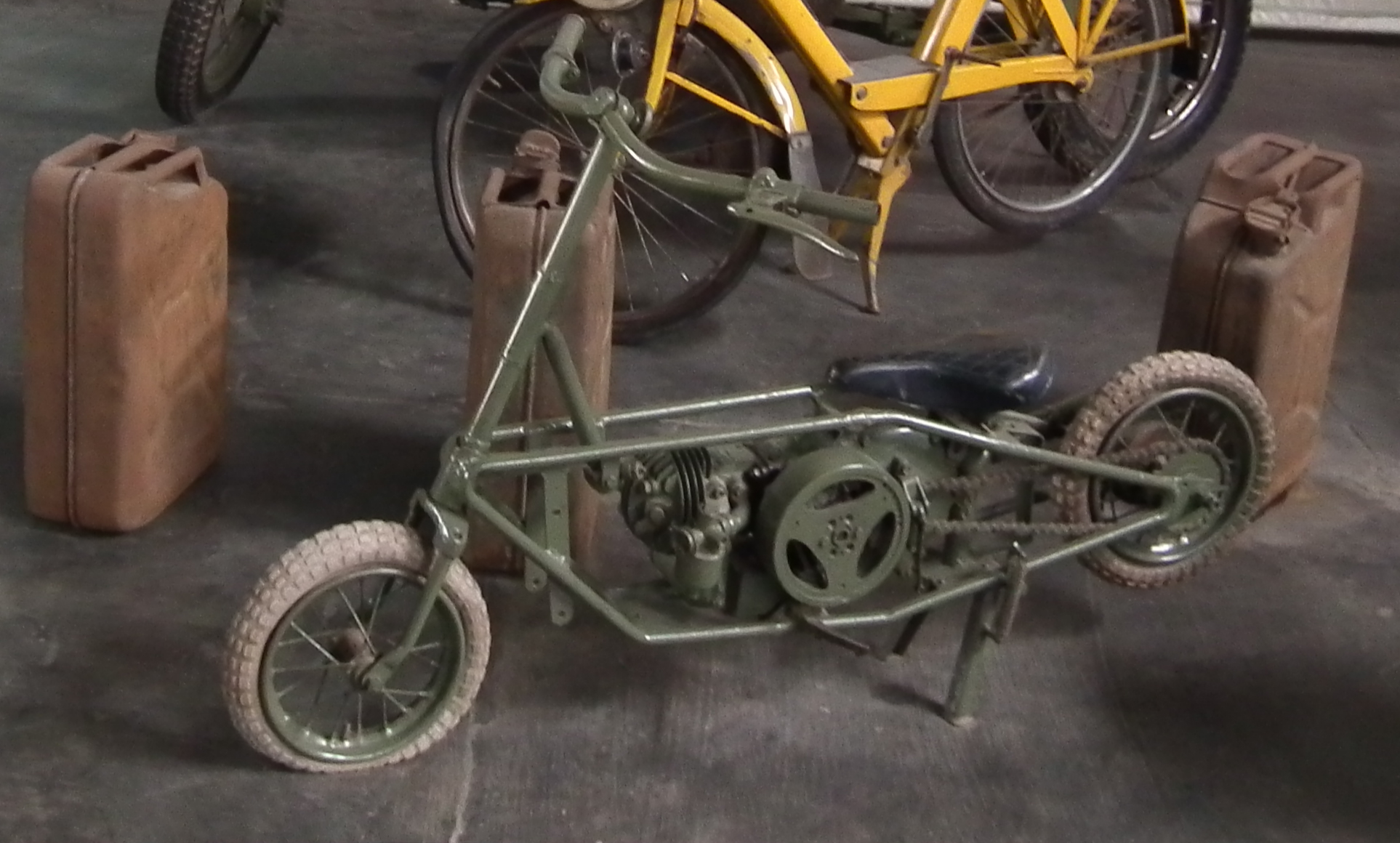|
Lloyd Cars Ltd
Lloyd Cars Ltd was a British motor manufacturer, founded by Roland Lloyd (1904–1965), son of a garage owner, and based in Patrick Street, Grimsby, Lincolnshire, England between 1936 and 1951. Two models were made, separated by World War II; the company was unusual for a small manufacturer in making nearly all components in-house. After car production ceased the company continued in general engineering until 1983. During World War II the company made components for Rolls-Royce Merlin aircraft engines. About 15 Lloyd cars are thought to survive. The make had no connection with North German Automobile and Engine company which made cars under a different Lloyd brand between 1906 and 1914 and between 1950 and 1963. Lloyd 350 The pre-war car was really a cyclecar and was powered by a single-cylinder, water-cooled Villiers two-stroke engine of 347 cc producing 11.5 bhp, located at the back of the car and transmitting power via a three-speed gearbox to the nearside re ... [...More Info...] [...Related Items...] OR: [Wikipedia] [Google] [Baidu] |
Grimsby
Grimsby or Great Grimsby is a port town and the administrative centre of North East Lincolnshire, Lincolnshire, England. Grimsby adjoins the town of Cleethorpes directly to the south-east forming a conurbation. Grimsby is north-east of Lincoln, England, Lincoln, (via the Humber Bridge) south-south-east of Kingston upon Hull, Hull, south-east of Scunthorpe, east of Doncaster and south-east of Leeds. Grimsby is also home to notable landmarks such as Grimsby Minster, Port of Grimsby, Cleethorpes Beach and Grimsby Fishing Heritage Museum. Grimsby was once the home port for the world's largest fishing fleet around the mid-20th century, but fishing then fell sharply. The Cod Wars denied UK access to Icelandic fishing grounds and the European Union used its Common Fisheries Policy to parcel out fishing quotas to other European countries in waters within of the UK coast. Grimsby suffered post-industrial decline like most other post-industrial towns and cities. However, food pro ... [...More Info...] [...Related Items...] OR: [Wikipedia] [Google] [Baidu] |
Automobiles
A car or automobile is a motor vehicle with wheels. Most definitions of ''cars'' say that they run primarily on roads, seat one to eight people, have four wheels, and mainly transport people instead of goods. The year 1886 is regarded as the birth year of the car, when German inventor Carl Benz patented his Benz Patent-Motorwagen. Cars became widely available during the 20th century. One of the first cars affordable by the masses was the 1908 Model T, an American car manufactured by the Ford Motor Company. Cars were rapidly adopted in the US, where they replaced animal-drawn carriages and carts. In Europe and other parts of the world, demand for automobiles did not increase until after World War II. The car is considered an essential part of the developed economy. Cars have controls for driving, parking, passenger comfort, and a variety of lights. Over the decades, additional features and controls have been added to vehicles, making them progressively more complex. Th ... [...More Info...] [...Related Items...] OR: [Wikipedia] [Google] [Baidu] |
World War II
World War II or the Second World War, often abbreviated as WWII or WW2, was a world war that lasted from 1939 to 1945. It involved the vast majority of the world's countries—including all of the great powers—forming two opposing military alliances: the Allies and the Axis powers. World War II was a total war that directly involved more than 100 million personnel from more than 30 countries. The major participants in the war threw their entire economic, industrial, and scientific capabilities behind the war effort, blurring the distinction between civilian and military resources. Aircraft played a major role in the conflict, enabling the strategic bombing of population centres and deploying the only two nuclear weapons ever used in war. World War II was by far the deadliest conflict in human history; it resulted in 70 to 85 million fatalities, mostly among civilians. Tens of millions died due to genocides (including the Holocaust), starvation, ma ... [...More Info...] [...Related Items...] OR: [Wikipedia] [Google] [Baidu] |
Rolls-Royce Merlin
The Rolls-Royce Merlin is a British liquid-cooled V-12 piston aero engine of 27-litres (1,650 cu in) capacity. Rolls-Royce designed the engine and first ran it in 1933 as a private venture. Initially known as the PV-12, it was later called ''Merlin'' following the company convention of naming its four-stroke piston aero engines after birds of prey. After several modifications, the first production variants of the PV-12 were completed in 1936. The first operational aircraft to enter service using the Merlin were the Fairey Battle, Hawker Hurricane and Supermarine Spitfire. The Merlin remains most closely associated with the Spitfire and Hurricane, although the majority of the production run was for the four-engined Avro Lancaster heavy bomber. A series of rapidly-applied developments, brought about by wartime needs, markedly improved the engine's performance and durability. Starting at 1,000 hp for the first production models, most late war versions produced just ... [...More Info...] [...Related Items...] OR: [Wikipedia] [Google] [Baidu] |
North German Automobile And Engine
Lloyd Motoren Werke G.m.b.H. (Lloyd Engine Works) was a German automobile manufacturer, created in 1908 and owned by the Norddeutscher Lloyd shipping company. The factory was in Bremen. The company operated under a variety of different names throughout the decades, but their products were nearly always badged with the Lloyd marque. Originally a manufacturer of luxury cars, the company was folded into the Borgward Group in 1929, with the brand no longer used on passenger cars until 1950. Production ended for good in 1963, although a successor company continued trading until 1989, selling replacement parts and also manufacturing engines for snowmobiles and boats. The German Lloyd marque had no connection with the British Lloyd Cars Ltd company active between 1936 and 1951. 1908–1937 The first cars were licence-built Kriéger electric vehicles. Petrol- engined models followed in 1908 with 3685 cc engines, but few were made. The Belgian electrical engineer, Paul Mossay, was e ... [...More Info...] [...Related Items...] OR: [Wikipedia] [Google] [Baidu] |
Cyclecar
A cyclecar was a type of small, lightweight and inexpensive car manufactured in Europe and the United States between 1910 and the early 1920s. The purpose of cyclecars was to fill a gap in the market between the motorcycle and the car. A key characteristic was that it could only accommodate two passengers sitting tandem style or passenger behind the driver. The demise of cyclecars was due to larger cars – such as the Citroën Type C, Austin 7 and Morris Cowley – becoming more affordable. Small, inexpensive vehicles reappeared after World War II, and were known as microcars. Characteristics Cyclecars were propelled by engines with a single cylinder or V-twin configuration (or occasionally a four cylinder engine), which were often air-cooled. Sometimes motorcycle engines were used, in which case the motorcycle gearbox was also used. All cyclecars were required to have clutches and variable gears. This requirement could be fulfilled by even the simplest devices su ... [...More Info...] [...Related Items...] OR: [Wikipedia] [Google] [Baidu] |
Villiers Engineering
Villiers Engineering was a manufacturer of motorcycles and cycle parts, and an engineering company based in Villiers Street, Wolverhampton, England. Early history In the 1890s John Marston's Sunbeam had become extremely successful by relying on high quality of production and finish. But Marston was dissatisfied with the pedals on his machines, which he bought in. In 1890 he dispatched his son Charles to the US on a selling trip, but included in his instructions that Charles must discuss pedal engineering with Pratt and Whitney in Hartford, Connecticut and come back with a high-class pedal and the machinery for making it. Charles said that the Villiers Engineering Co. was "the ultimate fruit" of his trip to the US, being impressed by the production system and the labour saving devices. He pointed out that "it was not possible to develop these at Sunbeamland, which had long been working on another plan, but it was possible to start them in a new factory". As a result of the to ... [...More Info...] [...Related Items...] OR: [Wikipedia] [Google] [Baidu] |
Two-stroke
A two-stroke (or two-stroke cycle) engine is a type of internal combustion engine that completes a Thermodynamic power cycle, power cycle with two strokes (up and down movements) of the piston during one power cycle, this power cycle being completed in one revolution of the crankshaft. A four-stroke engine requires four strokes of the piston to complete a power cycle during two crankshaft revolutions. In a two-stroke engine, the end of the combustion stroke and the beginning of the compression stroke happen simultaneously, with the intake and exhaust (or Scavenging (automotive), scavenging) functions occurring at the same time. Two-stroke engines often have a high power-to-weight ratio, power being available in a narrow range of rotational speeds called the power band. Two-stroke engines have fewer moving parts than four-stroke engines. History The first commercial two-stroke engine involving cylinder compression is attributed to Scotland, Scottish engineer Dugald Clerk, who pa ... [...More Info...] [...Related Items...] OR: [Wikipedia] [Google] [Baidu] |
Second World War
World War II or the Second World War, often abbreviated as WWII or WW2, was a world war that lasted from 1939 to 1945. It involved the vast majority of the world's countries—including all of the great powers—forming two opposing military alliances: the Allies and the Axis powers. World War II was a total war that directly involved more than 100 million personnel from more than 30 countries. The major participants in the war threw their entire economic, industrial, and scientific capabilities behind the war effort, blurring the distinction between civilian and military resources. Aircraft played a major role in the conflict, enabling the strategic bombing of population centres and deploying the only two nuclear weapons ever used in war. World War II was by far the deadliest conflict in human history; it resulted in 70 to 85 million fatalities, mostly among civilians. Tens of millions died due to genocides (including the Holocaust), starvation, ma ... [...More Info...] [...Related Items...] OR: [Wikipedia] [Google] [Baidu] |
Synchromesh
A manual transmission (MT), also known as manual gearbox, standard transmission (in Canada, the United Kingdom, and the United States), or stick shift (in the United States), is a multi-speed motor vehicle transmission system, where gear changes require the driver to manually select the gears by operating a gear stick and clutch (which is usually a foot pedal for cars or a hand lever for motorcycles). Early automobiles used ''sliding-mesh'' manual transmissions with up to three forward gear ratios. Since the 1950s, ''constant-mesh'' manual transmissions have become increasingly commonplace and the number of forward ratios has increased to 5-speed and 6-speed manual transmissions for current vehicles. The alternative to a manual transmission is an automatic transmission; common types of automatic transmissions are the hydraulic automatic transmission (AT), and the continuously variable transmission (CVT), whereas the automated manual transmission (AMT) and dual-clutch transmissio ... [...More Info...] [...Related Items...] OR: [Wikipedia] [Google] [Baidu] |
Double-acting Cylinder
In mechanical engineering, the cylinders of reciprocating engines are often classified by whether they are single- or double-acting, depending on how the working fluid acts on the piston. Single-acting A single-acting cylinder in a reciprocating engine is a cylinder in which the working fluid acts on one side of the piston only. A single-acting cylinder relies on the load, springs, other cylinders, or the momentum of a flywheel, to push the piston back in the other direction. Single-acting cylinders are found in most kinds of reciprocating engine. They are almost universal in internal combustion engines (e.g. petrol and diesel engines) and are also used in many external combustion engines such as Stirling engine A Stirling engine is a heat engine that is operated by the cyclic compression and expansion of air or other gas (the ''working fluid'') between different temperatures, resulting in a net conversion of heat energy to mechanical work. More specif ...s and some steam ... [...More Info...] [...Related Items...] OR: [Wikipedia] [Google] [Baidu] |



.jpg)




